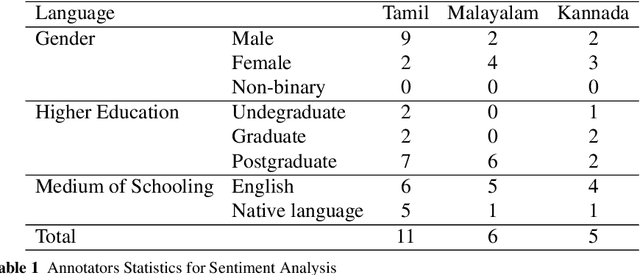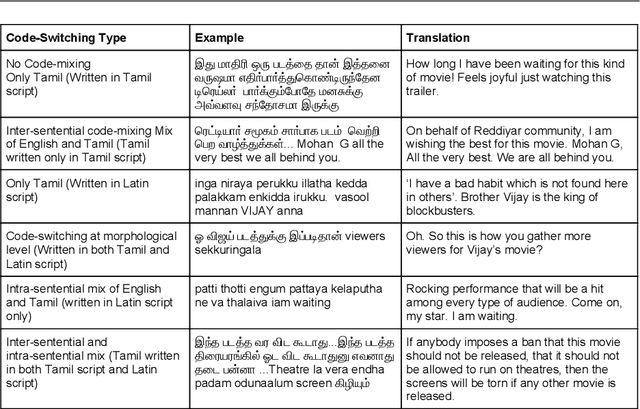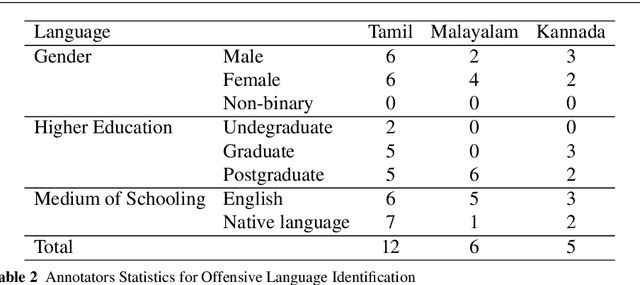Vigneshwaran Muralidaran
DravidianCodeMix: Sentiment Analysis and Offensive Language Identification Dataset for Dravidian Languages in Code-Mixed Text
Jun 17, 2021



Abstract:This paper describes the development of a multilingual, manually annotated dataset for three under-resourced Dravidian languages generated from social media comments. The dataset was annotated for sentiment analysis and offensive language identification for a total of more than 60,000 YouTube comments. The dataset consists of around 44,000 comments in Tamil-English, around 7,000 comments in Kannada-English, and around 20,000 comments in Malayalam-English. The data was manually annotated by volunteer annotators and has a high inter-annotator agreement in Krippendorff's alpha. The dataset contains all types of code-mixing phenomena since it comprises user-generated content from a multilingual country. We also present baseline experiments to establish benchmarks on the dataset using machine learning methods. The dataset is available on Github (https://github.com/bharathichezhiyan/DravidianCodeMix-Dataset) and Zenodo (https://zenodo.org/record/4750858\#.YJtw0SYo\_0M).
Corpus Creation for Sentiment Analysis in Code-Mixed Tamil-English Text
May 30, 2020



Abstract:Understanding the sentiment of a comment from a video or an image is an essential task in many applications. Sentiment analysis of a text can be useful for various decision-making processes. One such application is to analyse the popular sentiments of videos on social media based on viewer comments. However, comments from social media do not follow strict rules of grammar, and they contain mixing of more than one language, often written in non-native scripts. Non-availability of annotated code-mixed data for a low-resourced language like Tamil also adds difficulty to this problem. To overcome this, we created a gold standard Tamil-English code-switched, sentiment-annotated corpus containing 15,744 comment posts from YouTube. In this paper, we describe the process of creating the corpus and assigning polarities. We present inter-annotator agreement and show the results of sentiment analysis trained on this corpus as a benchmark.
 Add to Chrome
Add to Chrome Add to Firefox
Add to Firefox Add to Edge
Add to Edge